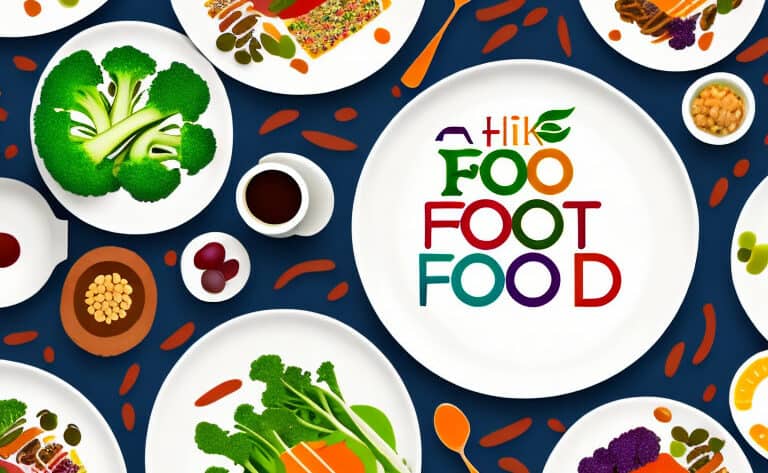If you’re dealing with unexplained symptoms such as digestive issues, headaches, skin problems, or chronic fatigue, you may have considered trying an elimination diet. Elimination diets are a dietary approach that involves removing certain foods from your diet in order to identify food sensitivities. Or intolerances that may be causing those symptoms. In this article, we’ll be understanding elimination diets.
What is an Elimination Diet?
Understanding Elimination Diets
An elimination diet is a nutritional approach that involves eliminating certain foods or groups of foods from your diet for a defined period of time, usually around 2-4 weeks. After the elimination period, you slowly reintroduce the eliminated foods and observe if you experience any symptoms or reactions.
This type of diet have been used for decades to help people identify food sensitivities. These diets are often adviced by healthcare professionals. These includes doctors and registered dietitians, to help people manage a variety of health conditions, including irritable bowel syndrome (IBS), inflammatory bowel disease (IBD), eczema, and migraines.
The Purpose of an Elimination Diet
The purpose of this diet is to identify potential food sensitivities that may be causing symptoms or health issues. By stopping common allergens, you give your body a chance to heal and reset.
Elimination diets are often used to help people identify the root cause of their symptoms. Which can be difficult to diagnose through traditional medical tests. For example, someone with chronic headaches may not be able to identify the trigger without going through an elimination diet.
How an Elimination Diet Works: Understanding Elimination Diets
This type of diet works by removing common allergenic foods from your diet, such as gluten, dairy, soy, nuts and seeds, and nightshades. This allows your body to recover from inflammation and stress that these foods may have been causing. After the elimination phase, you reintroduce these foods one at a time, allowing you to observe if any symptoms or reactions occur.
Note that elimination diets should be done under the guidance of a healthcare professional. As they can be complex and may require additional testing to confirm a diagnosis. Additionally, elimination diets should not be used as a weight loss tool. As they are designed to identify food sensitivities rather than promote weight loss.
This diet can be challenging, as it requires a lot of planning and preparation. It’s important to work with a registered dietitian to ensure that you are meeting your nutritional needs while on the diet. And to help you develop a plan for reintroducing foods after the elimination phase.
Overall, elimination diets can be a valuable tool for identifying food sensitivities. By giving your body a chance to heal and reset, you may be able to reduce or eliminate symptoms that have been impacting your quality of life.
Benefits of an Elimination Diet: Understanding Elimination Diets
The benefits of an elimination diet can be numerous, both in terms of identifying food sensitivities and improving overall health:
Identifying Food Sensitivities
An elimination diet can help you identify food sensitivities that you may not have known you had. By removing potential triggers, you can observe if any symptoms disappear or improve.
Food sensitivities can manifest in a variety of ways, including digestive issues, skin problems, and even mood changes. By identifying and eliminating trigger foods, you can improve your quality of life and reduce the risk of developing more serious health conditions.
You should note that food sensitivities can be different for everyone. So an elimination diet can be a helpful tool in determining what foods work best for your individual body.
Reducing Inflammation
By reducing potential triggers, it can help your body to reduce inflammation. This can lead to a reduction in symptoms and may be good for conditions such as arthritis and autoimmune disorders.
Inflammation is a natural response in the body, but chronic inflammation can lead to a variety of health problems. By removing inflammatory foods from your diet, you can give your body a chance to heal and reduce the risk of getting chronic inflammation.
Additionally, reducing inflammation can also lead to improved skin health, as many skin conditions are linked to inflammation in the body.
Improving Digestive Health
The Elimination diet can be helpful for improving digestive health. As they can help identify food triggers that may be causing stomach upset, or other digestive issues. Additionally, by removing inflammatory foods, you can give your gut a chance to heal and improve gut health.
Gut health is important for overall health, as the gut is responsible for absorbing nutrients and eliminating waste. By improving gut health, you can improve your immune system, reduce the risk of developing chronic diseases, and even improve mental health.
It is important to note that this type of diet should only be done under the advice of a healthcare professional, as it can be difficult to ensure that you are getting all the necessary nutrients while eliminating certain foods. Additionally, it’s important to reintroduce eliminated foods in a systematic way to properly identify trigger foods.
Common Foods to Eliminate
This diet is a popular way to identify food intolerances and allergies. By removing certain foods from your diet for a period of time and then slowly reintroducing them, you will know which foods may be causing you discomfort. There are several common foods or food groups that are often stopped during an elimination diet.
Dairy Products
These includes milk, cheese, and yoghurt, are often removed as they are a common allergen and can cause digestive distress for some people. Dairy products contain a sugar called lactose, which can be difficult for some people to digest. Additionally, many people are allergic to the proteins found in dairy products. Fortunately, there are many alternatives to dairy products available. Look for substitutes such as almond or soy milk, and vegan cheese options.
Gluten
We all know that gluten is a protein commonly found in wheat, barley, and rye. It can cause stomach issues, headaches, and other symptoms in some people. Gluten-free grains, such as quinoa, rice, and buckwheat, are good options for substitutions. It’s worth noting that many processed foods contain gluten, so it’s important to read labels carefully if you’re avoiding gluten.
Soy
This is often removed because it is a common allergen and can be hard to digest. Soy is also common in many processed foods, so it can be difficult to avoid. Look for substitutes such as coconut aminos instead of soy sauce. Coconut aminos are made from the sap of coconut trees and are a great alternative to soy sauce, which is made from fermented soybeans.
Nuts and Seeds
Nuts and seeds are often removed as they can cause digestive distress and are common allergens. Additionally, many people with stomach issues have difficulty digesting the fiber found in nuts and seeds. Look for substitutes such as sunflower seed butter or tahini instead of peanut butter. Sunflower seed butter and tahini are made from ground sunflower seeds and sesame seeds, and are great alternatives to peanut butter.
Nightshades
The nightshades, including tomatoes, eggplants, and peppers, are often removed as they can cause inflammation and stomach issues in some people. Nightshades contain a compound called solanine, which can be difficult for some people to digest. Look for substitutes such as zucchini or sweet potatoes. Zucchini and sweet potatoes are both delicious and nutritious alternatives to nightshades.
Eliminating certain foods from your diet can be challenging, but it can also be an opportunity to try new foods and experiment with new recipes. By knowing which foods are causing you discomfort, you can make informed decisions about what to eat and improve your overall health and well-being.
How to Start an Elimination Diet
Understanding Elimination Diets
Starting this diet can be a daunting process, but following a few simple steps can make the process smoother.
Elimination diets have been gaining popularity in recent years as a way to identify food sensitivities. The idea behind the diet is to stop certain foods for a period of time, usually a few weeks to a few months, and then gradually reintroduce them to see if any symptoms occur. This process can help identify potential triggers and allow individuals to make informed decisions about their diet.
Consult a Healthcare Professional
It’s important to consult with a qualified healthcare professional before starting this diet, especially if you have any underlying health conditions, or if you are pregnant or breastfeeding. A dietitian or nutritionist can help you develop a plan that suits your individual needs.
During your visit, your healthcare professional may recommend certain foods to remove based on your symptoms or medical history. They can also help ensure that you are still getting all necessary nutrients while on the diet.
Plan Your Meals
Planning ahead is key when starting this diet. It can be overwhelming to suddenly remove certain foods from your diet, so it’s important to have a plan in place. Make a list of foods that you can eat and plan your meals and snacks ahead of time.
There are many resources available to help with meal planning, such as cookbooks and online recipes. It’s important to make sure that you are still getting all necessary nutrients while on the diet, so consider talking to a dietitian or nutritionist to ensure that your meals are balanced.
Keep a Food Diary
Keeping a food diary can be helpful during the elimination phase, as it can help you identify any patterns or potential triggers. Make sure to track what you eat and any symptoms that you experience. This can help you and your healthcare professional identify potential triggers and make informed decisions about your diet.
Note that this type of diet should not be used as a long-term solution. Once potential triggers have been identified, it’s important to work with your healthcare professional to develop a long-term plan that works for you.
Conclusion: Understanding Elimination Diets
In conclusion, an elimination diet can be a helpful tool in knowing potential food sensitivities and improving overall health. By eliminating common allergens, you give your body the chance to heal and reset. If you’re considering starting an elimination diet, make sure to consult with a qualified healthcare professional and plan ahead to ensure success.
Related Article: The Best Diets for IBS: What to Eat and Avoid




